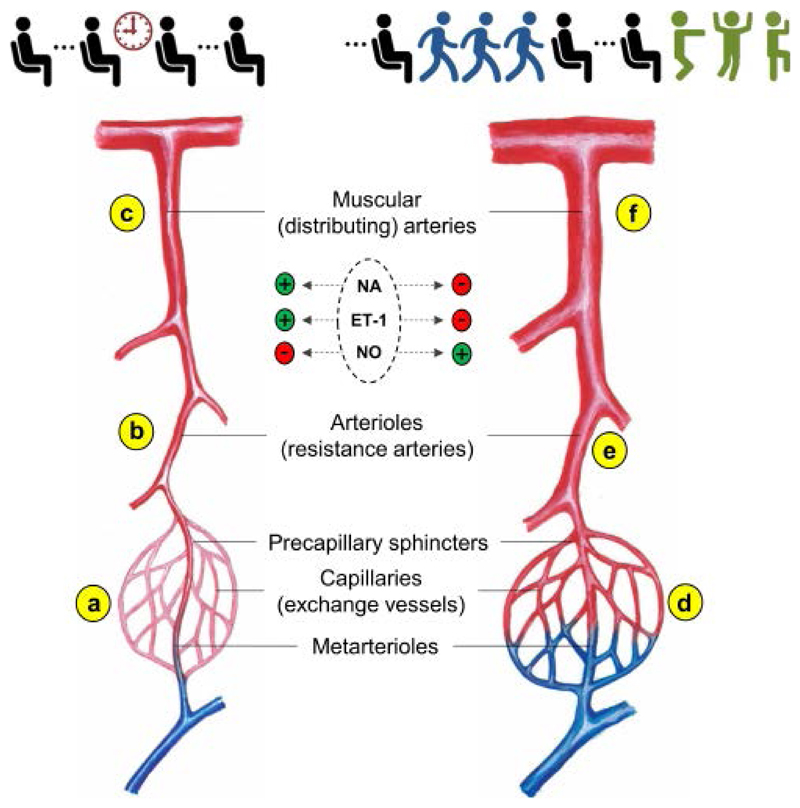Figure 4.
Hypothesised vascular mechanisms by which prolonged sitting may impact on blood pressure in contrast to sitting interrupted by regular active breaks. During prolonged sitting (left side): (a) low metabolic/ATP demand within muscles results in low levels of vasodilator metabolites, constriction of pre-capillary arterioles, and closure of precapillary sphincters. This in turn results in blood being shunted through metarterioles. (b) Reduced pressure differential between capillaries and upstream muscular (distributing) arteries reduces blood flow and endothelial shear stress, promoting vasoconstriction through associated endothelial mediators (i.e., reduced nitric oxide and increased endothelin-1), and (c) reduced calibre of resistance arterioles, increasing peripheral resistance and BP. During brief 2-3 minute activity bouts during prolonged sitting (right side): (d) increased metabolic/ATP demand within muscles results in upregulation of vasodilator metabolites, dilation of precapillary arterioles and relaxation of precapillary sphincters, promoting flow through nutritive capillaries. (e) The greater pressure differential between capillaries and upstream muscular (distributing) arteries increases blood flow and endothelial shear stress, promoting vasodilation through associated endothelial mediators, and (f) increased calibre of resistance arterioles, reducing peripheral resistance and BP. Previously observed alterations in circulating noradrenaline (NA) during these two states are also depicted, along with endothelin-1 (ET-1) and nitric oxide bioavailability (NO), for which the evidence is only preliminary.

